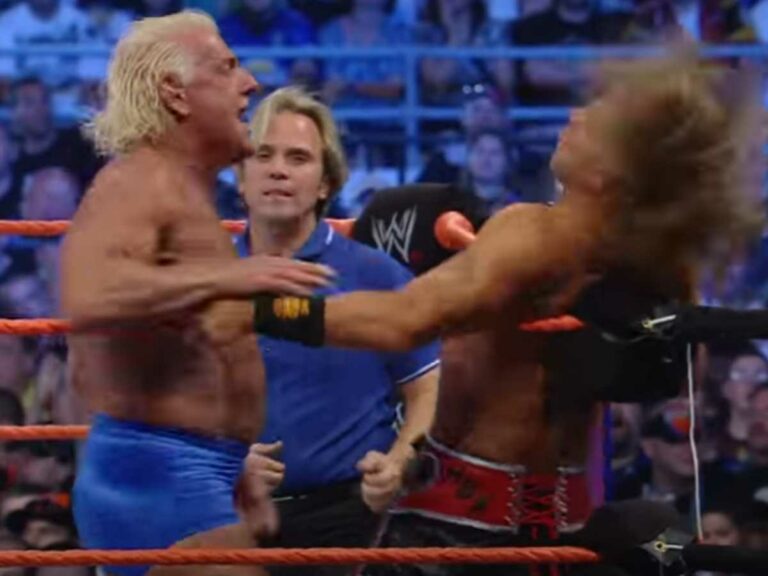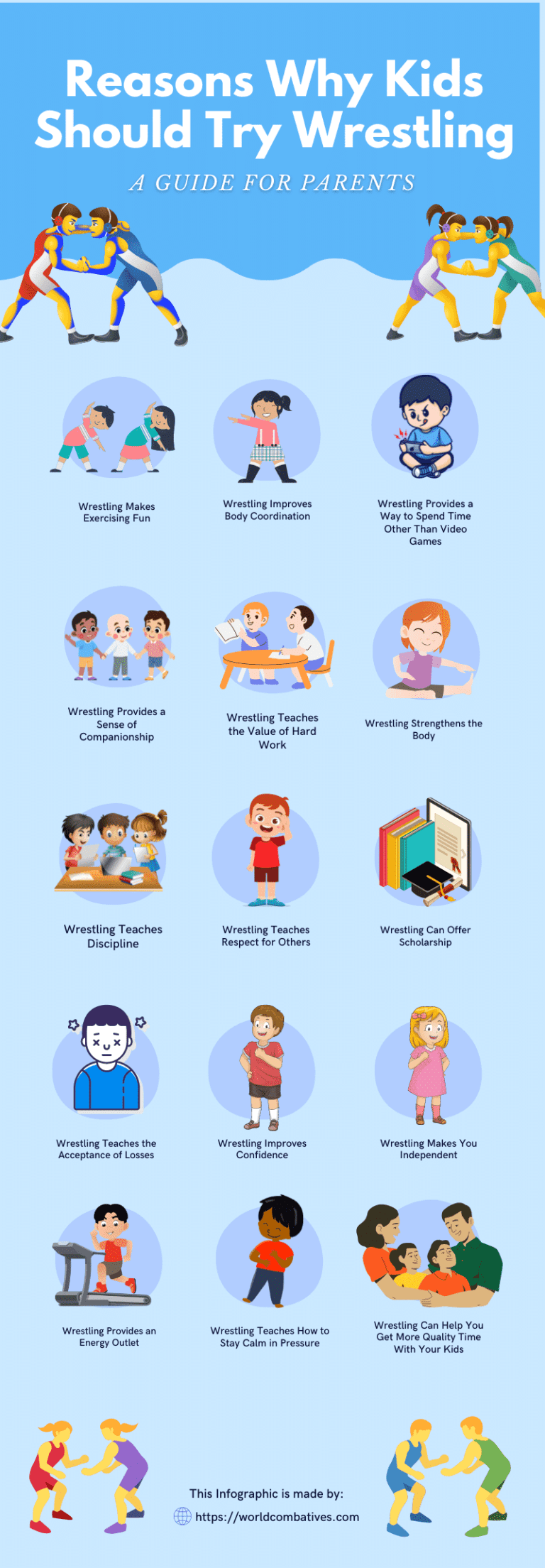Wrestling Weights Classes: How Do They Work and Why Do They Matter?
Many people wonder about Wrestling weight classes, such as their presence, their importance, and how these weight classes work. This post aims to give a clear picture of weight classes, like their purpose, regulating bodies, and their impact on the wrestlers.
The purpose of a weight class is to make the matches fair. Generally speaking, heavier people tend to be stronger and smaller people tend to be faster. Weight classes balance these with weight classes so that matches would be based on skills and techniques. Knowing the weight classes is essential as it is a huge factor in a Wrestler’s training.
This post aims to share everything you need to know about weight classes. How many are these classes? What is the usual weight for each class? Why are they important? Their competitiveness and the weight class a wrestler should strive for.

Why does wrestling have weight classes?
As a general rule, wrestling has weight classes to make the matches fair and balanced. Weight has a lot to do with strength. Thus, letting people have a match with someone near their weight makes the fight focus on skill and techniques instead of strength alone.
Strength is very important in wrestling since wrestling is focused on takedowns and holds.
Wrestling is based on weight because strength is a massive factor in winning matches. Thus, to make the matches fair, weight classes were introduced. This changed wrestling from a pure strength-based sport to a sport that values skills, techniques, and conditioning.
Based on my experience, I can agree with weight classes.
There was a time when I constantly sparred with someone who weighed 30 lbs more than me. Because of the difference in power, I couldn’t properly hold the enemy. Thus, I never won.
I also tried sparring with someone who is 50 lbs heavier. Well, this lessened the things I can do to do takedowns.
Plus, once they got above, I couldn’t find a way to turn the situation.
However, things are different when I am on a spar with someone in my weight class. We fight and win based on our skills and techniques. But, of course, strength matters. That’s why conditioning is also important. However, the impact of strength isn’t as much as fighting someone a lot heavier.
Thus, weight classes are essential.
Recommended Read: What should you eat before a wrestling match? In weight management, you need to ensure that you are getting the right foods to go to competitions at peak performance. Luckily, I created a post discussing the food you can eat that is scientifically proven to increase muscle performance, including 11 easy-to-follow recipes. Here is the link: What should Wrestlers eat before a match?
However, it can be hard to tell the various wrestling weight classes as there are many regulatory bodies for wrestling. For example, Greco-Roman and Freestyle wrestling have different weight classes than scholastic wrestling.
Generally speaking, wrestling has 10-14 weight classes each which are 2-4 pounds apart. However, these classes vary because of the different regulatory bodies and the impact of the school or state.
For example, here are the typical 14 weight classes in High School Wrestling regulated by the National Federation of State High School Associations (NFHS).
- 106 lbs
- 113 lbs
- 120 lbs
- 126 lbs
- 132 lbs
- 138 lbs
- 145 lbs
- 152 lbs
- 160 lbs
- 170 lbs
- 182 lbs
- 195 lbs
- 220 lbs
- 285 lbs
However, some places can have some minor changes, such as New York, New Jersey, Montana, Pennsylvania, and Michigan.
For example, New York has a 99 lbs weight class, and Montana has 98 lbs and 105 lbs.
College wrestling has a different weight class. College wrestling is generally governed by the National Collegiate Athletic Association (NCAA).
Here are the 10 weight classes in College Wrestling.
- 125 lb
- 133 lb
- 141 lb
- 149 lb
- 157 lb
- 165 lb
- 174 lb
- 184 lb
- 197 lb
- Heavy Weight (183 to 285 lbs)
It is worth noting that Women’s wrestling is governed by The Women’s Collegiate Wrestling Coalition (WCWC)
Here are the 10 weight classes for Women Wrestlers:
- 101 lb
- 109 lb
- 116 lb
- 123 lb
- 130 lb
- 136 lb
- 143 lb
- 155 lb
- 170 lb
- 191 lb
With these in mind, you might start to wonder what is the hardest weight class to wrestle.
As a general rule, the hardest weight class to wrestle is the weight class with the most competitors. This varies depending on location, but they are usually on the 135-150 lbs division.
However, this doesn’t mean we should try to bulk or cut a lot of weight to prevent competing in these classes.
It is wise to compete are your peak condition. This means you should go to a match at your ideal weight to maximize performance.
It doesn’t matter if you enter an uncompetitive weight class, then you can’t have a proper match because you bulked or cut too much weight.
In fact, cutting too much weight is usually prohibited in Folkstyle wrestling.
But how would you know if you’re fighting for your ideal weight?
According to the American Journal of Clinical Nutrition, Men should have 8% to 19%, and Women should aim for 21% to 32% of body fat.
Some wrestlers advise 8-12% body fat which is within the range given by the American Journal of Clinical Nutrition.
However, this doesn’t mean we should reduce our weight to reach the recommended fat percentage.
Cutting too much weight is against the rule in most scholastic wrestling tournaments.
For example, State High School Associations stated that male wrestlers aren’t allowed to lose 7% of their body fat instantly, and female wrestlers aren’t allowed to lose 12%.
Recommended Read: Are you interested to know more about High School Wrestling? If interested, you may check this post: Is High School Wrestling a Good Sport?
But why is weight so important? Why are weight classes forcibly implemented? Why do they constantly adjust weight classes? Let’s summarize everything in the last section.

How do Wrestling Weight Classes Work?
Wrestling classes work by separating wrestlers based on their weight. Usually, wrestlers are divided into 10-14 weight classes, each having a 2-4 lb gap.
So, why are weight classes important?
As I previously said, weight classes minimize the impact of strength in matches. This makes winning a match based on conditioning, skills, and techniques.
Weight classes also make wrestling fun since the matches are unpredictable. For example, you might already expect a 190 lb to win against a 130 lb.
There might be some exceptions, but the truth is that weight matters a lot, especially in a sport focused on takedowns.
However, it is worth noting that elementary wrestling generally doesn’t have a weight class, as cutting weight is contraindicated on young wrestlers.
Weight classes balanced the matches. Thus, others who don’t use weight classes balance the matches via different means.
So, here is how wrestling matches are balanced.
- Madison System – The Madison still uses weight for balancing matches, but they generally don’t have weight classes. Usually, competitors are weighted before a match, and a director pairs them with someone who weighs close to their weight. This prevents weight cutting.
- Division-Based System – Division-based system also uses weight, but they further divide their competitors according to age. This means a 10-year-old would have a match against another 10-year-old if they have almost the same weight. This keeps the matches fair.
- Weight-Class System – This solely uses weight classes, and it is what we’ve been discussing throughout the post.
As you can see, weight matters a lot in wrestling to the point that all balancing rules still consider weight a factor.
A takedown sport like wrestling is strength-dependent. Thus, weight plays a crucial role, and balancing requires matches on players with the same weight.
Lastly, why are the weight classes different? Why can’t there just be one weight class?
Well, the weight varies, especially in adolescence when people grow a lot. Thus, we can’t have the same weight classes for High School and College Wrestling. The weight classes also change because governing bodies are finding ways to produce weight classes that discourage unhealthy weight cutting.
Weight classes are so important in wrestling that it is hard to have one general rule regarding weight classes.
At least not for now.
What’s next? Preparing for a match includes weight management, and a crucial part of weight management involves when are the wrestling seasons so you can adjust your diet and training regimen. So I created a post discussing the usual months for wrestling season, which you can find here: Is Wrestling all year round?







